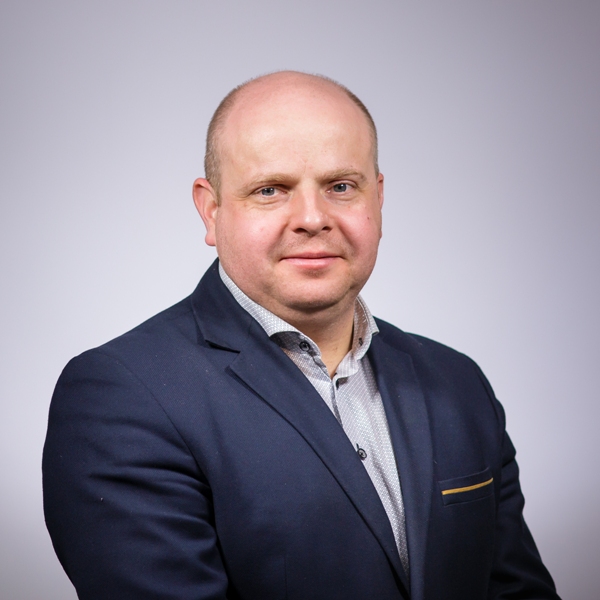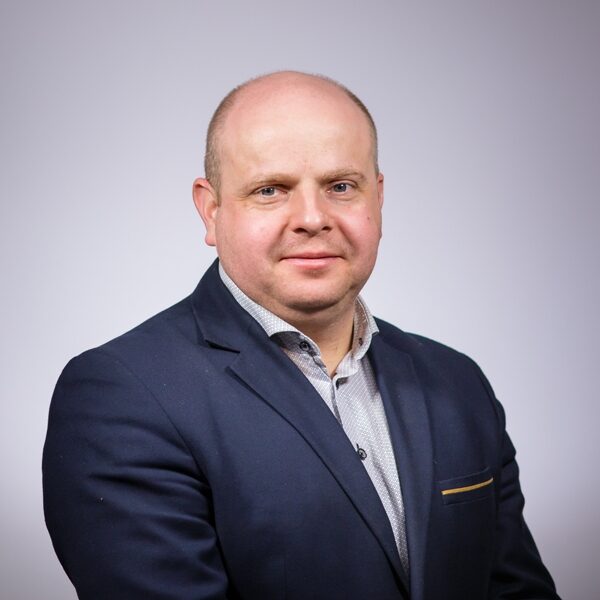ChloroPhytovol
Dye-sensitised solar cells based on new natural organic dyes and innovative method for ultrasonic spraying

Developing new dye-sensitised solar cells with a photoactive layer made of natural organic dyes obtained from phytoplankton (among others cyanobacteria and green algae) and chokeberry with the use of an innovative method for ultrasonic spraying.
keywords: photovoltaics, solar cells, dye-sensitised cells, spray coater, ultrasonic spraying, natural organic dyes
The project will use dyes and mixtures of dyes, which have not yet been used to produce dye-sensitised cells. Dyes obtained from, among others, cyanobacteria are of particular importance in this context. Searching for the use of such materials is connected with the challenges of water bodies where anthropopressure leads to cyanobacterial bloom. The research goals related to the mechanisms of changing the absorption activity of cyanobacteria depending on insolation are relevant in this aspect, as they can contribute to developing methods increasing the functionality of dye-sensitised solar cells.
An important element of the project will be the use of ultrasonic spraying, which enables layering on nonconducting surfaces made of materials with limited resistance to high temperature and pressure. Forming drops of a solution with the use of ultrasounds of a defined frequency makes it possible to limit the drop-sized dispersion, and consequently an arithmetic deviation of the pore size on a surface. Proper preparation of a surface for specific dyes contributes to a more stable fixation of dye on a semiconductor surface and better electron transport, as well as prevents the agglomeration of dyes particles on a semiconductor surface. It is also planned to activate and modify surfaces in order to increase cell stability. Dye-sensitised solar cells are non-toxic, can work in low light conditions, have high efficiency inside buildings, do not need advanced manufacturing technology, and give the possibility of large-scale production while maintaining low CO2 emission.
PROJECT LEADER
MARCIN LIBERA, PhD, Eng.

Photo by Julia Agnieszka Szymala
Marcin Libera, PhD, Eng.
Institute of Chemistry
e-mail: marcin.libera@us.edu.pl
The University of Silesia:
- Marcin Libera, PhD Eng., Faculty of Science and Technology, chemistry
- Sylwia Golba, PhD Eng., Faculty of Science and Technology, materials engineering
- Edyta Sierka, PhD, DSc, Assoc. Prof., Faculty of Science and Technology, biological sciences
- Katarzyna Bednarczyk, MA, PhD student, Faculty of Science and Technology, chemistry
National members:
- Marek Lipiński, PhD, DSc, Assoc. Prof. of the Polish Academy of Sciences, Institute of Metallurgy and Materials Science of the Polish Academy of Sciences, materials engineering
- Tomasz Tański, PhD, DSc, Assoc. Prof. of the Silesian University of Technology, materials engineering
International members:
- Prof. Pierre Audebert, Paris-Saclay University, PPSM, ENS Cachan, CNRS, chemistry
- Prof. Jwo-Huei Jou, National Tsing Hua University, Department of Materials Science and Engineering, chemistry
- Prof. Saulius Grigalevicius, Kaunas University of Technology, Department of Polymer Chemistry and Technology, chemistry.
News
10 June 2022
Currently, the team waits for cyanobacterial bloom in water bodies and for chokeberry fruits in order to start analyses and application of dyes and dye mixtures. So far, the project carried out the application of composite layers made of conductive polymers with the method of ultrasonic spraying, which are to constitute one of the electron transport layers. The layers were created on conductive and non-conductive surfaces with limited resistance to high temperature, in various process conditions. Comparatively, the project carried out the application of identical composite materials on conductive surfaces with the use of electrospinning.
We entered into collaboration with the Burn Centre in Siemianowice Śląskie in the aspect of the usage of composite layers made of conductive polymers for medical purposes.
RESEARCH EXCELLENCE INTIATIVE
presents
Meet the laureates of the Research Excellence Initiative calls for proposals “Green Horizon” and “Post-COVID Horizon”.
The research project: Dye-sensitised solar cells based on new natural organic dyes and innovative method for ultrasonic spraying
Grant amount: PLN 120,000
PROJECT LEADER

Photo by Julia Agnieszka Szymala
Marcin Libera, PhD Eng.
Institute of Chemistry
e-mail: marcin.libera@us.edu.pl
The University of Silesia:
- Marcin Libera, PhD Eng., Faculty of Science and Technology, chemistry
- Sylwia Golba, PhD Eng., Faculty of Science and Technology, materials engineering
- Edyta Sierka, PhD, DSc, Assoc. Prof., Faculty of Science and Technology, biological sciences
- Katarzyna Bednarczyk, MA, PhD student, Faculty of Science and Technology, chemistry
National members:
- Marek Lipiński, PhD, DSc, Assoc. Prof. of the Polish Academy of Sciences, Institute of Metallurgy and Materials Science of the Polish Academy of Sciences, materials engineering
- Tomasz Tański, PhD, DSc, Assoc. Prof. of the Silesian University of Technology, materials engineering
International members:
- Prof. Pierre Audebert, Paris-Saclay University, PPSM, ENS Cachan, CNRS, chemistry
- Prof. Jwo-Huei Jou, National Tsing Hua University, Department of Materials Science and Engineering, chemistry
- Prof. Saulius Grigalevicius, Kaunas University of Technology, Department of Polymer Chemistry and Technology, chemistry.





